Recipe for HOMEMADE ECOLOGICAL SOAP
So, tonight I wanted to share with you this easy recipe to make homemade soap, using olive oil. Very easy, simple and chemical free.
I learnt it a few years ago in Tabacalera de Madrid, with my travel buddy Fabio in a soap workshop, next to the bike workshop... and today I am sharing it here so that it can become more well known! Partly, of my own experiments and what I have liked about each soap that I have made!
First of all, let's clarify that it is cold process, we are not going to heat any of the ingredients and it is a very good way of using up oil that is left over after cooking...
The three main ingredients are:
- 420g of olive oil
- 56g of soda
- 135g of water
*These measurements will allow you to make 6-8 medium sized soaps.
* The recipes can be doubled or tripled based on how much you want to make.
BE CAREFUL: To double or triple the mixture you will need large amounts of soda, for which you will need to be protected with gloves, a mask and glasses... The vapour from the soda is damaging.
*Caustic soda should have a minimum concentration of 90% but it is better to find one that has 96%-98%.
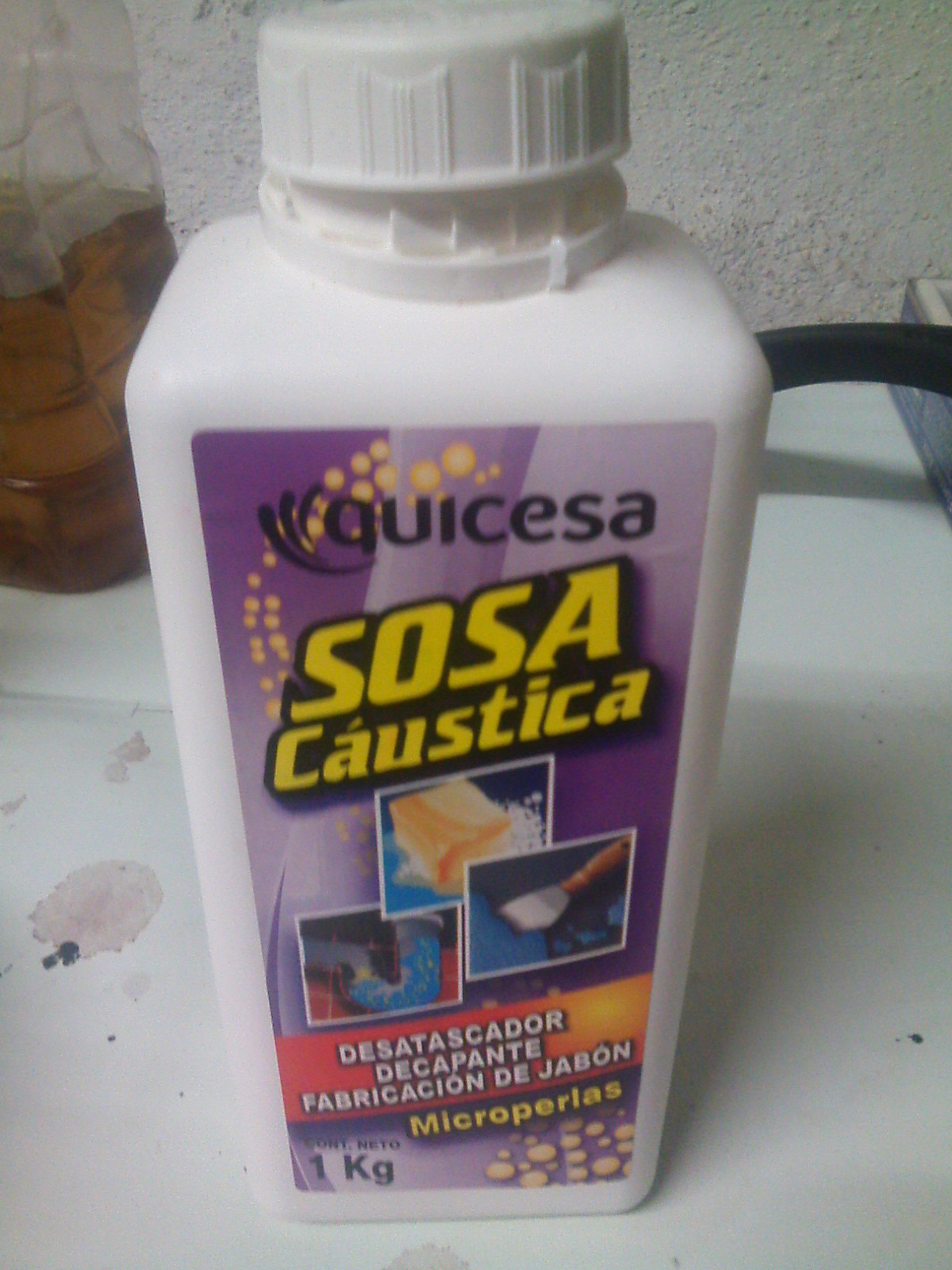
*As for the olive oil, it is the base fat. Each base fat needs a different amount of soda. We can look up the proportions in the following table.
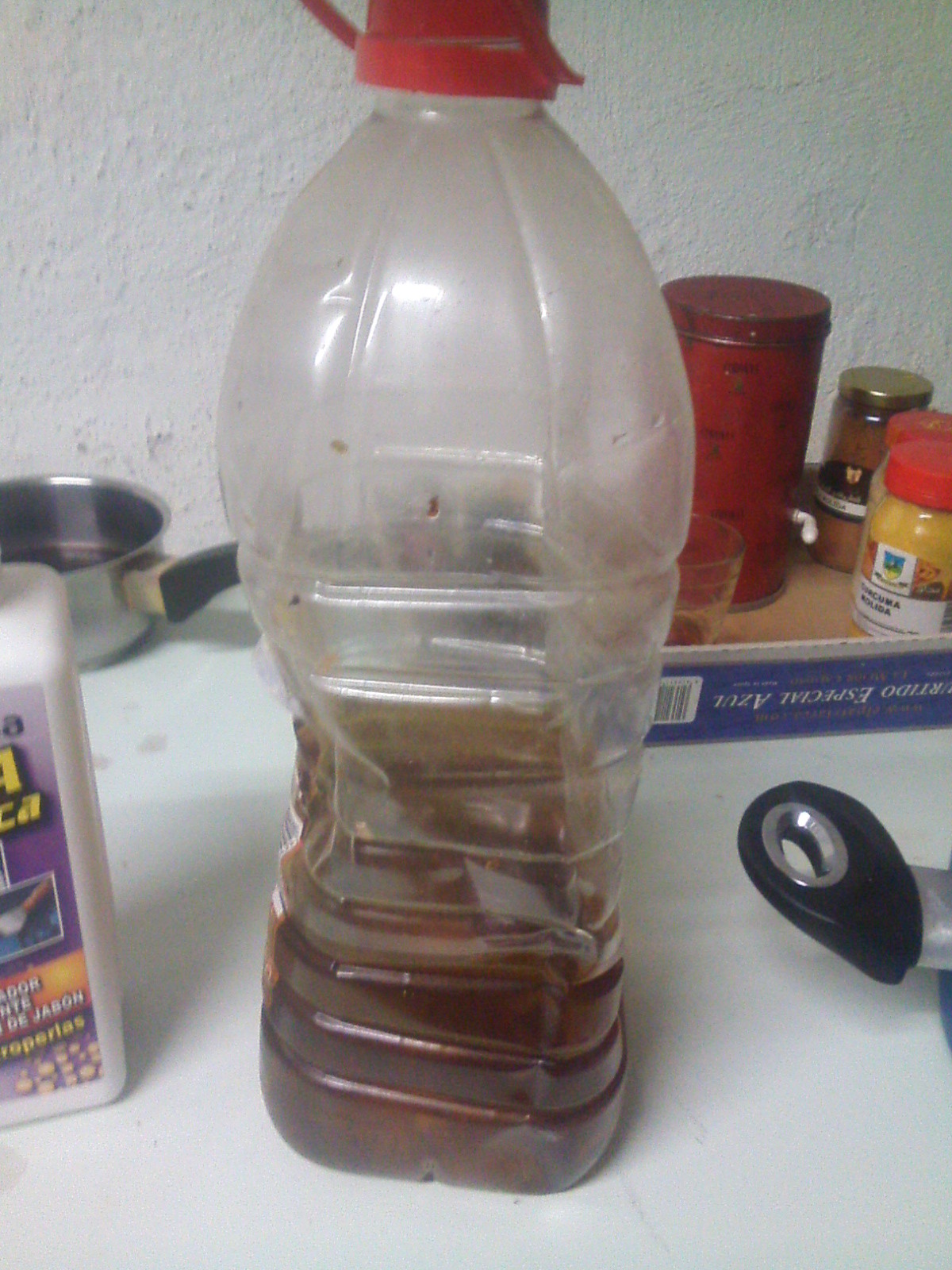
What do we need? OUR UTENSILS!
-
Electric scales
-
Plastic whisk
-
Gloves! (The soda is corrosive)
-
Pitcher to measure the thickness
-
Stainless steel pot. (enamelled steel)
-
Basin with water
- Tongue
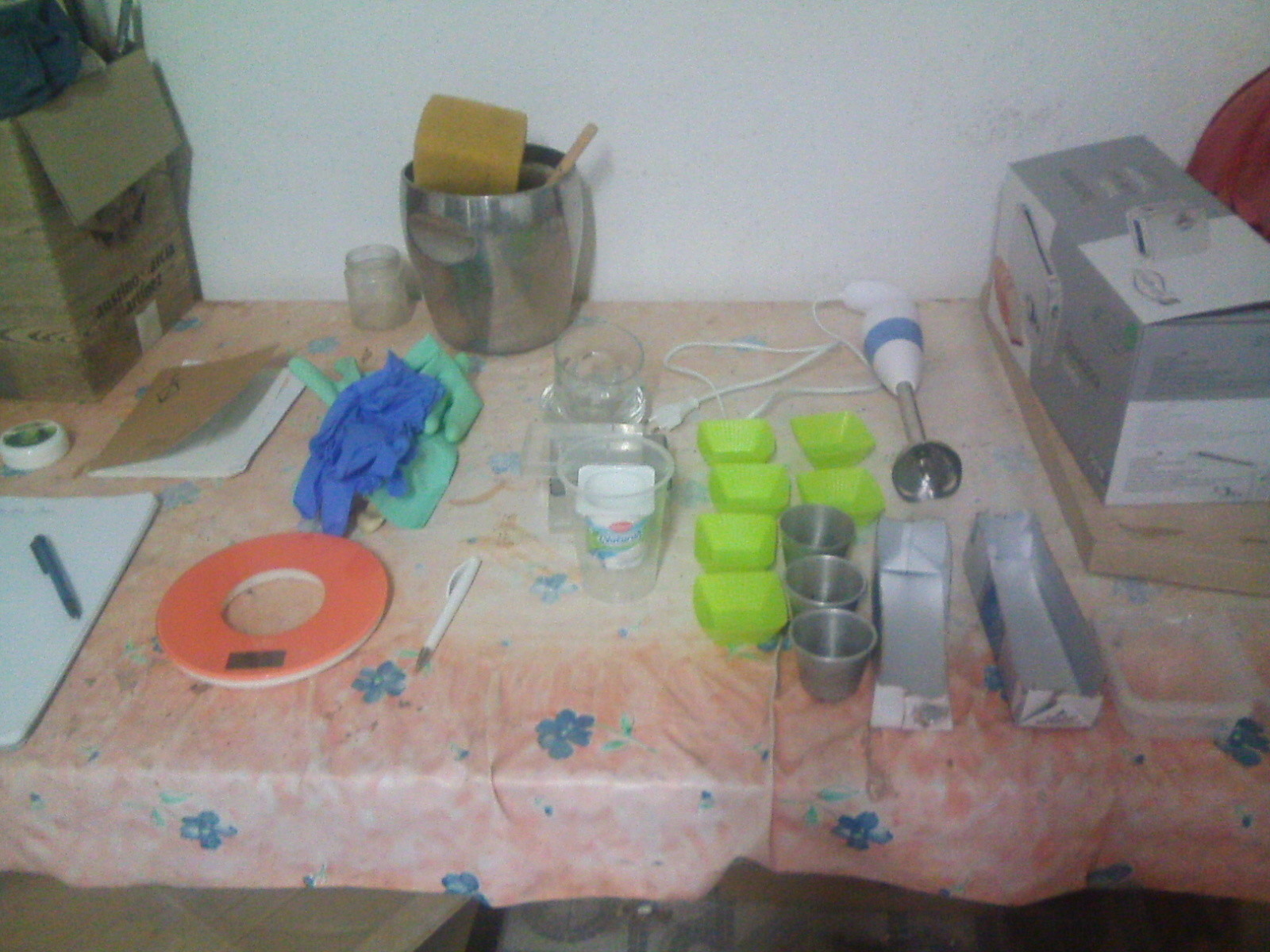
*It is recommended that the utensils are cleaned the following day after using them because they will be less greasy.
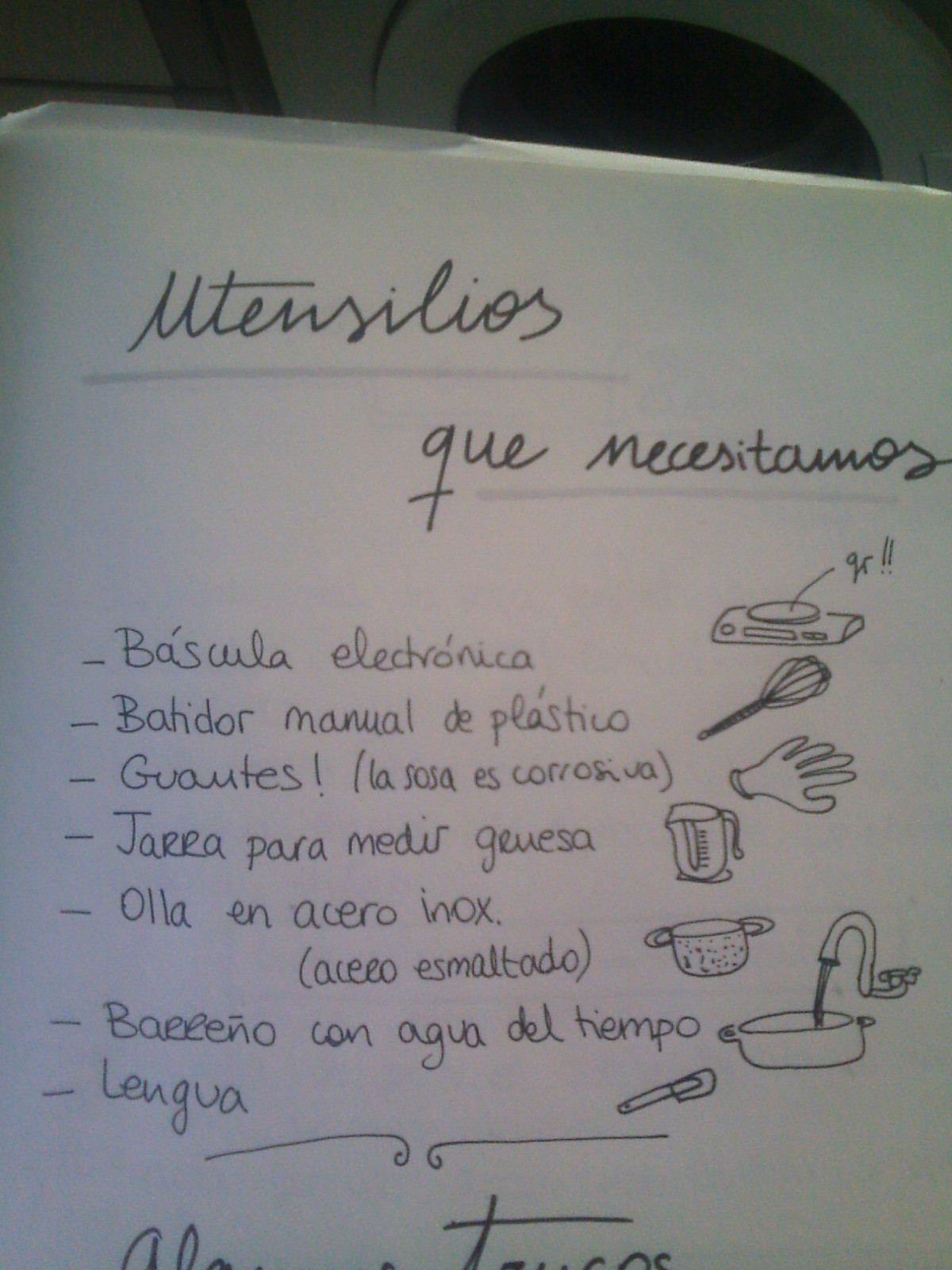
Cold process. Ecological Soap:
Put the soda into the water, carefully, especially with the vapour. The container will reach a temperature of 80ºC!
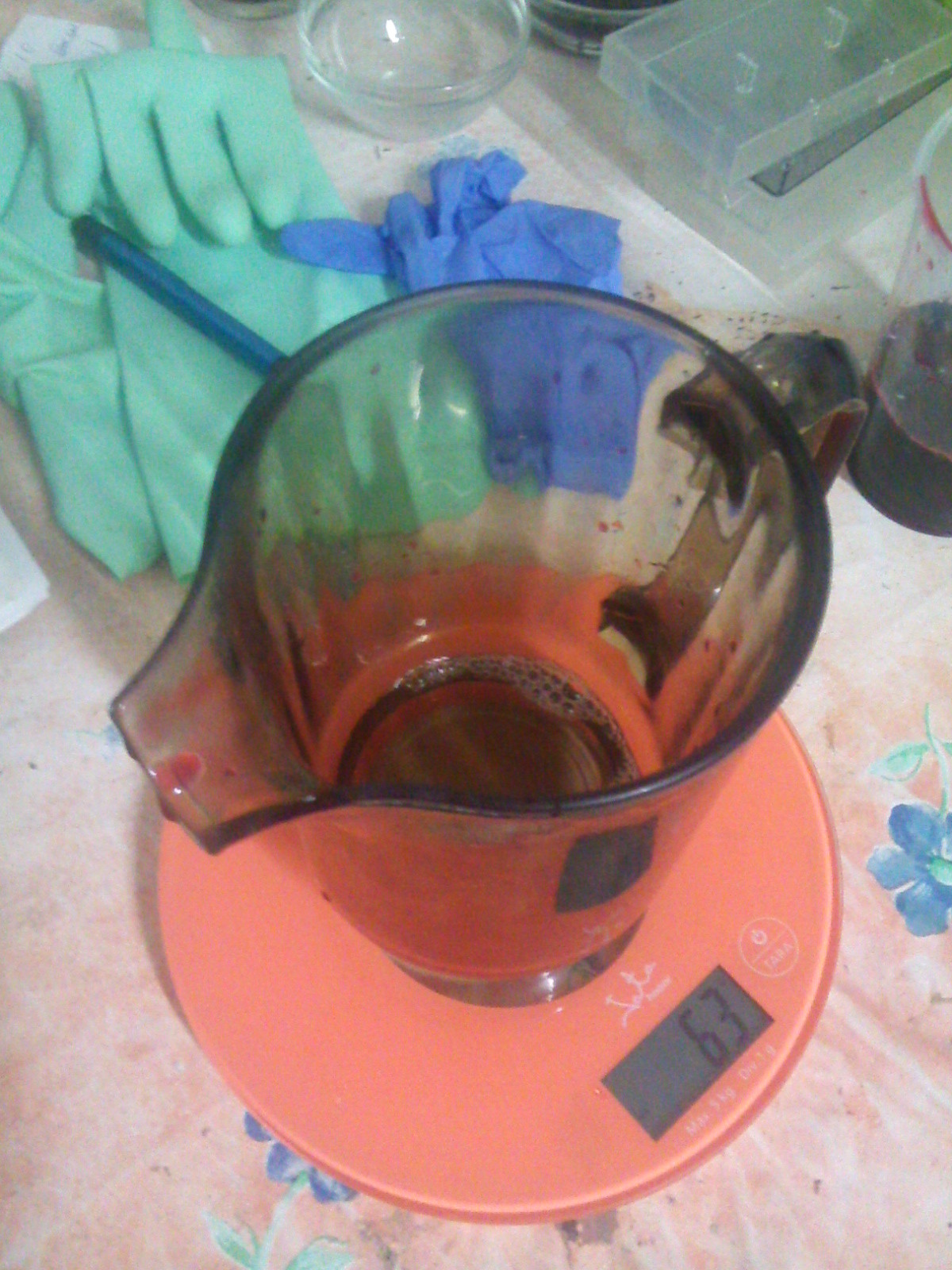
-So, in order to add this mixture to the oil, it should be cooled. Put it in the basic with water until the container with the soda is cooled.
- Soda and the oil= Temperature
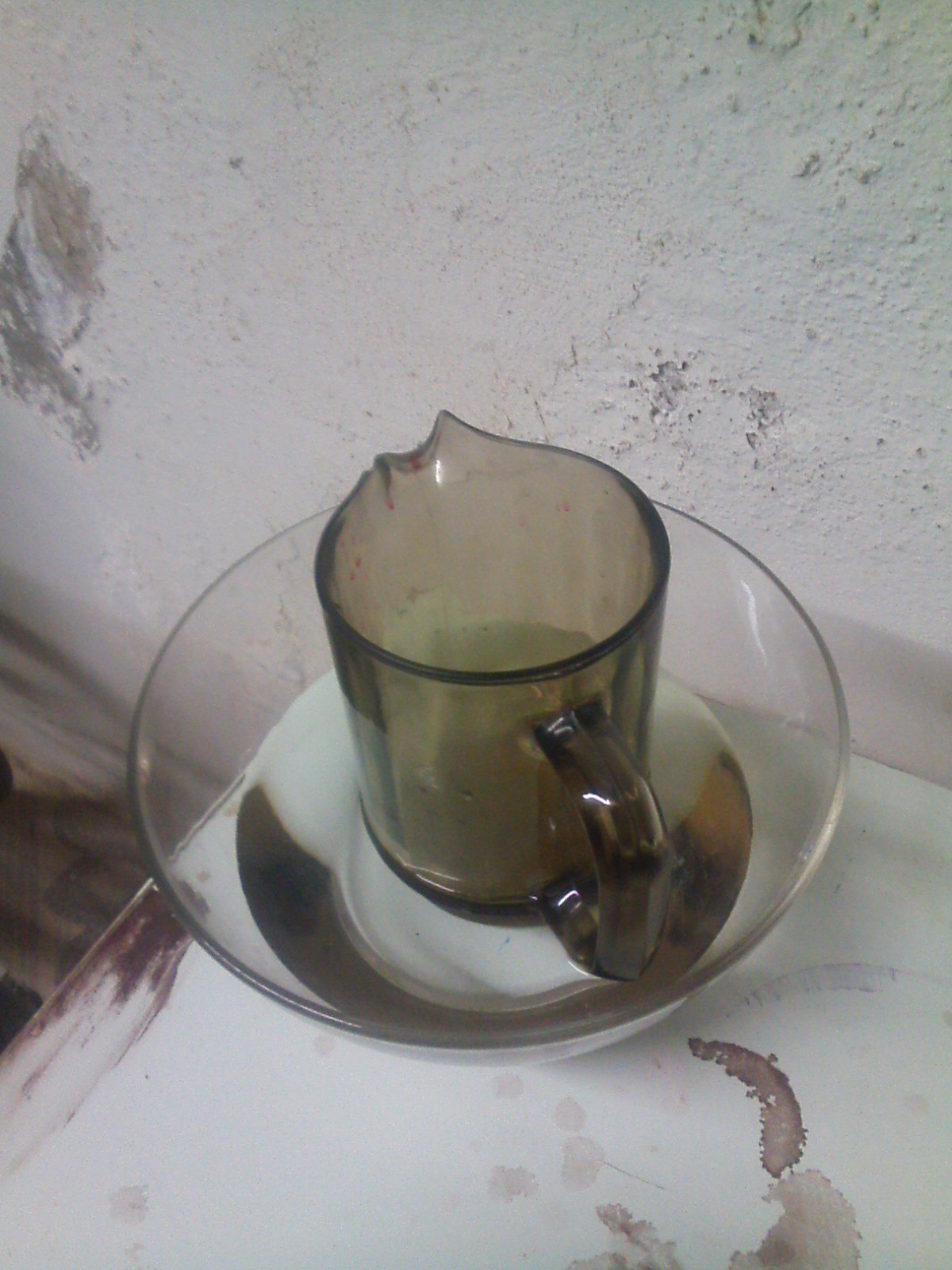
-Put the oil in the pot and when then soda (soda + water) is cooled, add it gradually, little by little to the oil. As you are gradually adding the soda, stir it with the whisk.
IMPORTANT: You should always continue with the same movement with the whisk. If you start mixing in circles to the left or the right, you will have to continue this until the end.
-You cannot stop mixing (for an estimated time of 20mins) by hand.
-After the 20-25mins, continue mixing with the whisk (normal head) In the same movement as before.
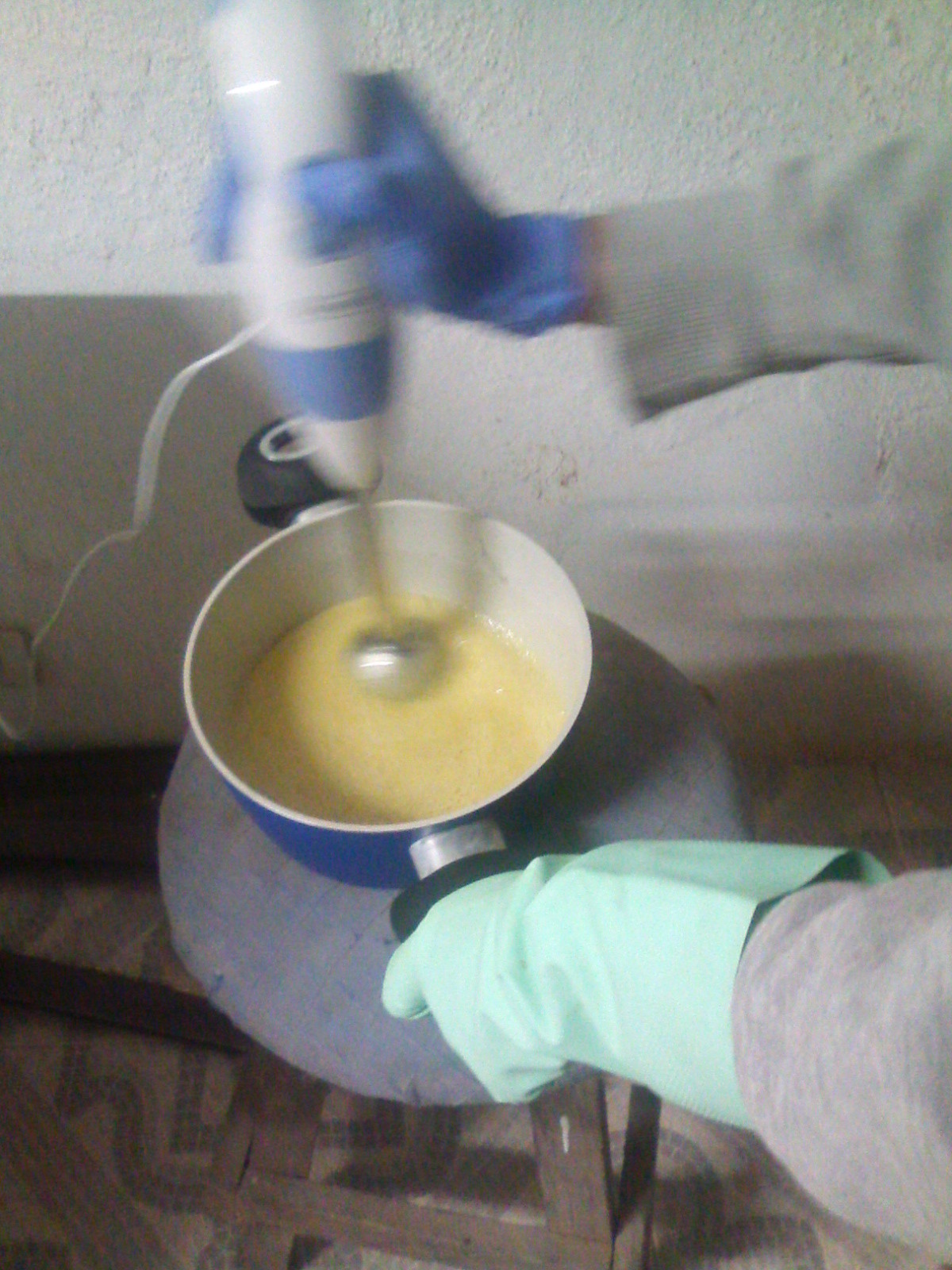
*What I have done, is start mixing it by hand, but it didn't take me 20mins, only that when I see that it is mixed, I start using the electric whisk so that it doesn't last forever!
*IMPORTANT: Always work with gloves, soda is corrosive. If for some reason the soda gets onto your skin, you can neutralise the burning with apple cider vinegar.
-Once you have a texture similar to mayonnaise, the soap mix is ready. "Rennet point"

-When we have reached this point, this is when you can add substances to give it it's colour, smell etc. **More to come explaining what you can add...
-Once the mixture is finished, leave it to stand in a silicone mould and give it a few taps as you are putting it in, to fill in the gaps so that the shape of the soap comes out complete, without air bubbles...

-Then leave the moulds in a shoe box, covered with a cloth, film or a plastic bag.... on top.
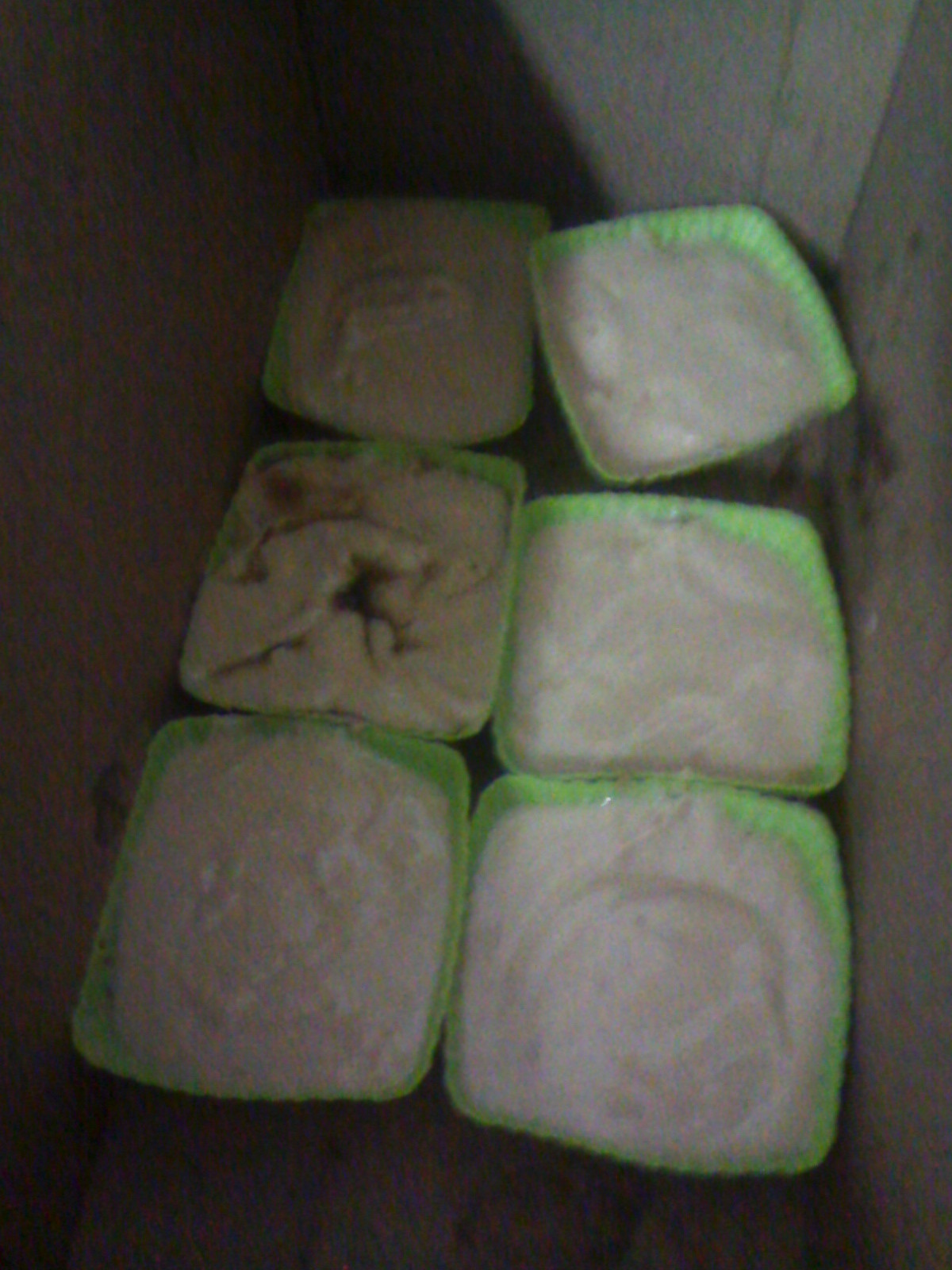
-Leave our soap to rest for 24h and once the time has passed, we can take them out of their moulds.
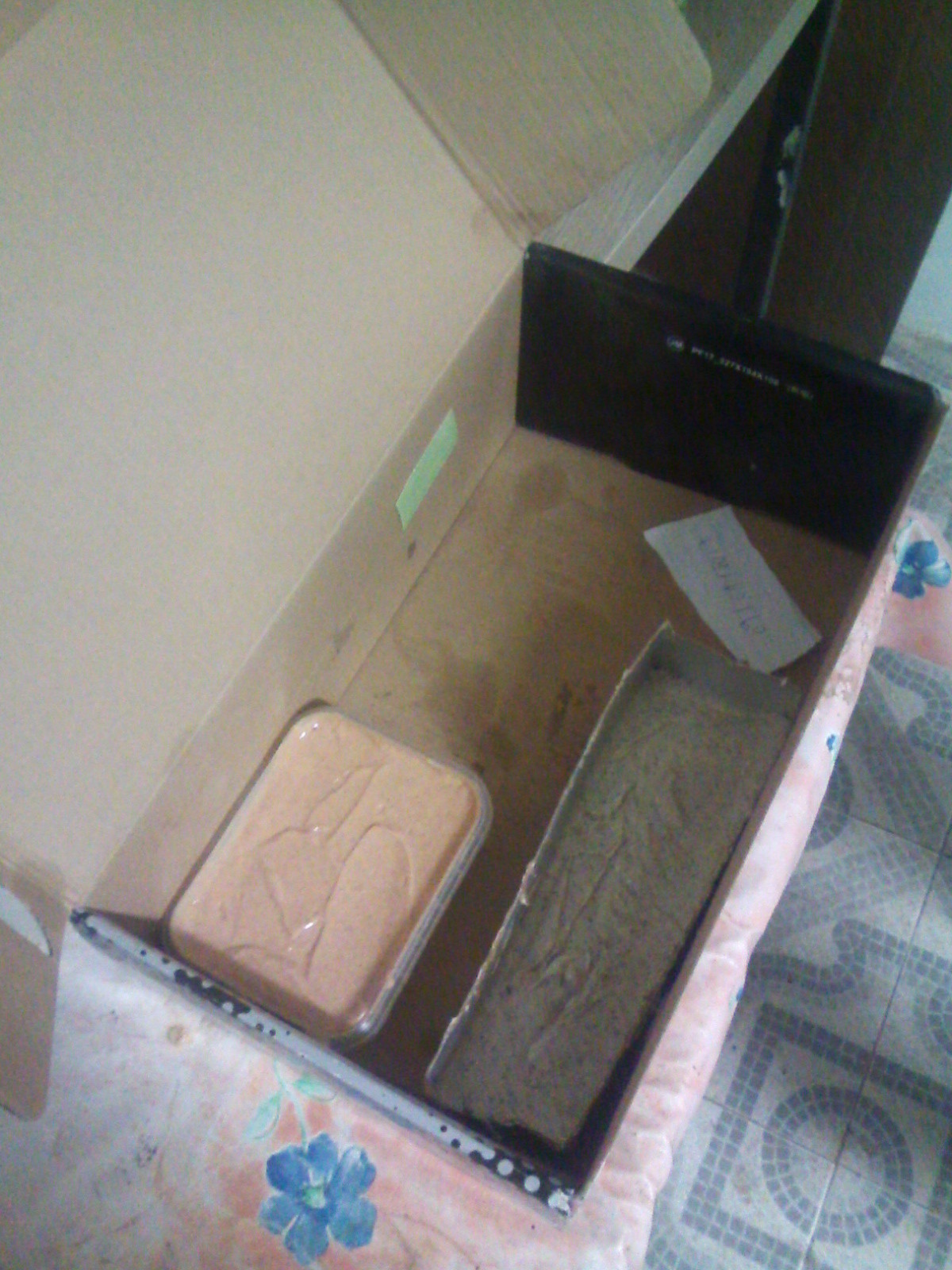
**BE CAREFUL: Wear gloves whenever you are handling the soap, the soda is still corrosive.
Curing process:
-Once they have been removed from their moulds, leave the soap in a box with their label + date of production (to know their components and when it was made). We will turn them every 5 or 6 days, always leaving a cloth over the soaps.
Moulds that we can use?!
Silicone moulds: Like the greens ones in the photos, they are very comfortable when it comes to taking them out.
Metal moulds: Before adding the mixture, we put a paper film into the metal moulds, to make it easier to remove the soap.
Plastic moulds: You will have to grease the moulds before putting the soap mixture into them. (A few drops of oil is enough and you can use your fingers to put it in).
How to improve ecological soap with recycled oil?
We can add: The rind from a lemon/ lime/ orange. Lemon and lime are very good for your hands and softens the smell of the used oil.
Powdered coffee: Removed the smell of fat that can be left on your hands (1 spoonful per recipe).
You can also make a pot of coffee, leave it to cool and mix it with the water (totalling the liquid to the 135g in the base recipe), add the soda and once the soap making process is in the rennet point (the texture of mayonnaise), add a spoonful of coffee to create a more intense aroma.
**We can also make infusions of flavours that we we and mix them with water. When it is cooled, add the soda.
Differences between essences and essential oils:
- Essences: Are soaked in oil and we cna make them at home. To make them at home, use a container, put the herbs that you want in it (they should be well dried) and cover them completely in oil. (It is better if the container is dark). Leave it in the cupboard and each day we have to take it and turn it without whisking it!. Put a label with the date on it and in 21 days, it is ready to use! Use 10 drops in the soap mixture!
- Essential oil: Is directly extracted from plants. USE 3 DROPS
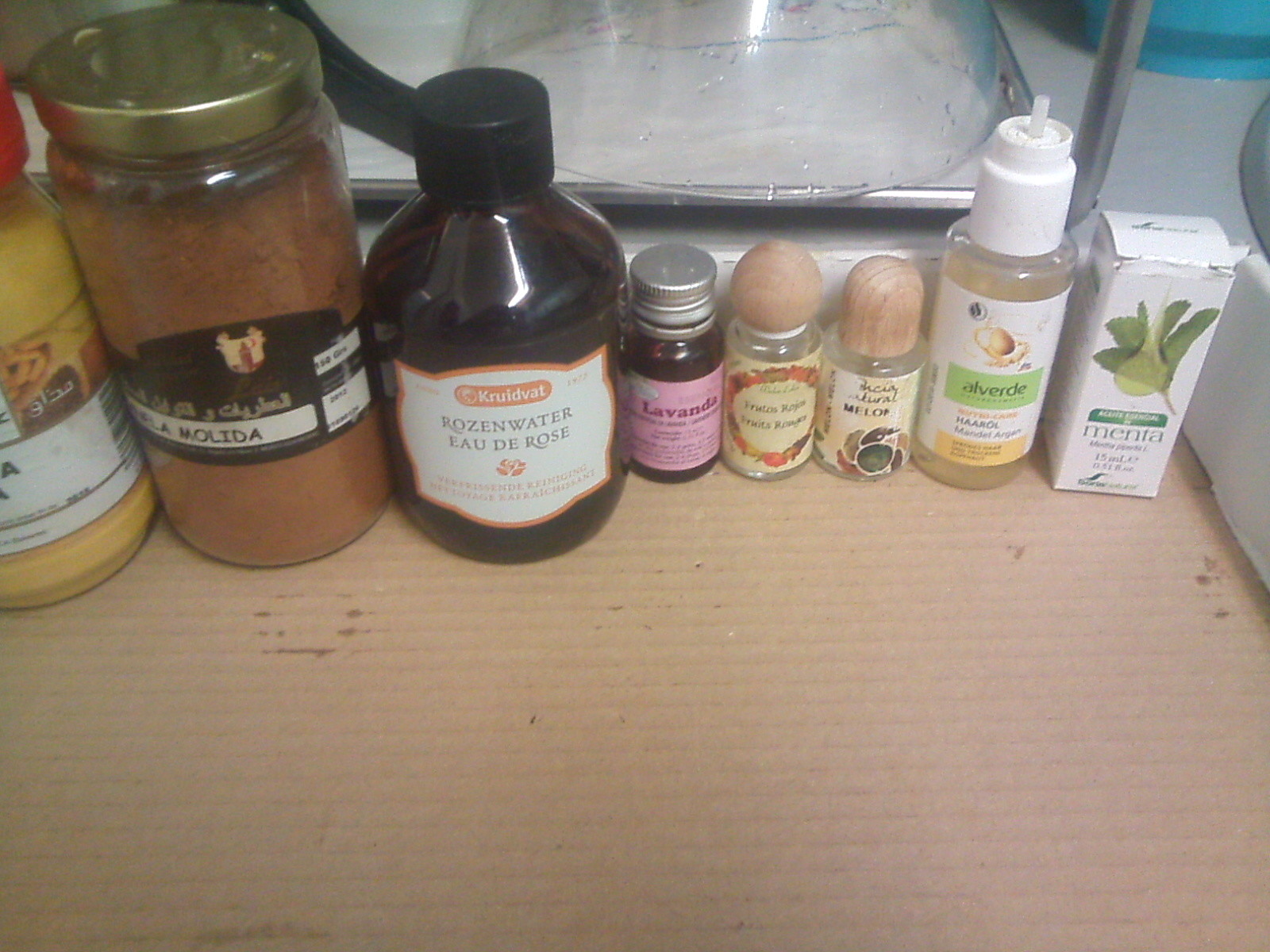
I have some essences and oils at home but they were shop bought! I would like to make them at home...
**Always add them to the soap mixture when it is at the rennet point (mayonnaise texture).
Coloured soaps:
-You can add them as powder (P) or as an infusion (I), as long as it is always when the mixture is at the rennet point.
- Red: Alcanet root (I) / Red trumpet vine flowers (I)
- Light yellow: Ginger (P) / Iris/Lily root (P)
- Amarillo: Saffron (P) / Calendula (I) / Chamomile (I) / Turmeric (P) / Curry (P) / Pollen (P)
- Orange: Paprika (P) / Cayenne pepper (P)
- Pink: Beetroot (I) / Rose petals (I)
- Purple: Violet (flower) (I) / Purple irises (flower) (I) / Lavender (flower) (I)
- Lilac: Skin of red onion (I) / Mallow (flower) (I)
- Brown: Henna (P) / Cinnamon (P) / Coco (P)
- Beige: Tea (I) / Skin of white onion (I)
- Green: Mint (I) / Green tea (I) / Nettle (I) / Rosemary leaf (I) / Ivy (I) / Chlorophyll (P) / and especially algae (Fucus, Spirulina, Nori... )
- Blue: Cypress berries (I) / Blue iris flower (I) / Roman chamomile (I)
- White:Talc (P) without over using it!
- Black: Cade oil, without over using it because the smell is very intense and difficult to cover.
Soaps that I have made:
I always like to use crushed aloe vera because it creates more foam and it is super beneficial for your skin!
- Soap for dermatitis or fungi: 3 basic ingredients (oil, water and soda), turmeric powder, 8 drops of rosemary oil, crushed aloe vera.
- Ex-foliating soap: 3 basic ingredients (oil, water and soda), crushed aloe vera, filtered sand from the beach/ powdered coffee.
- Soap with aloe vera:3 basic ingredients (oil, water and soda), crushed aloe vera and some essential oil (lavender, rosemary,... )
There are a thousand different ways, it is all an experiment, I love playing with the differenet colours and aromas, it is a world so big that when you enter it you feel lost but then it is very fun! Today i made aloe vera based soaps, hibiscus water, ginger infusion.... Apart from some in which I put mint essence, almond oil, coffee, turmeric, ginger powder, lemon peel, cinnamon,... Not in the same one, of course! in various soaps.... You can see the results in the last photos!
And now these photos are of some soaps that I made and gave as Christmas presents before, thats how I prepare them:
I like to use strings like these, it is sold like this:
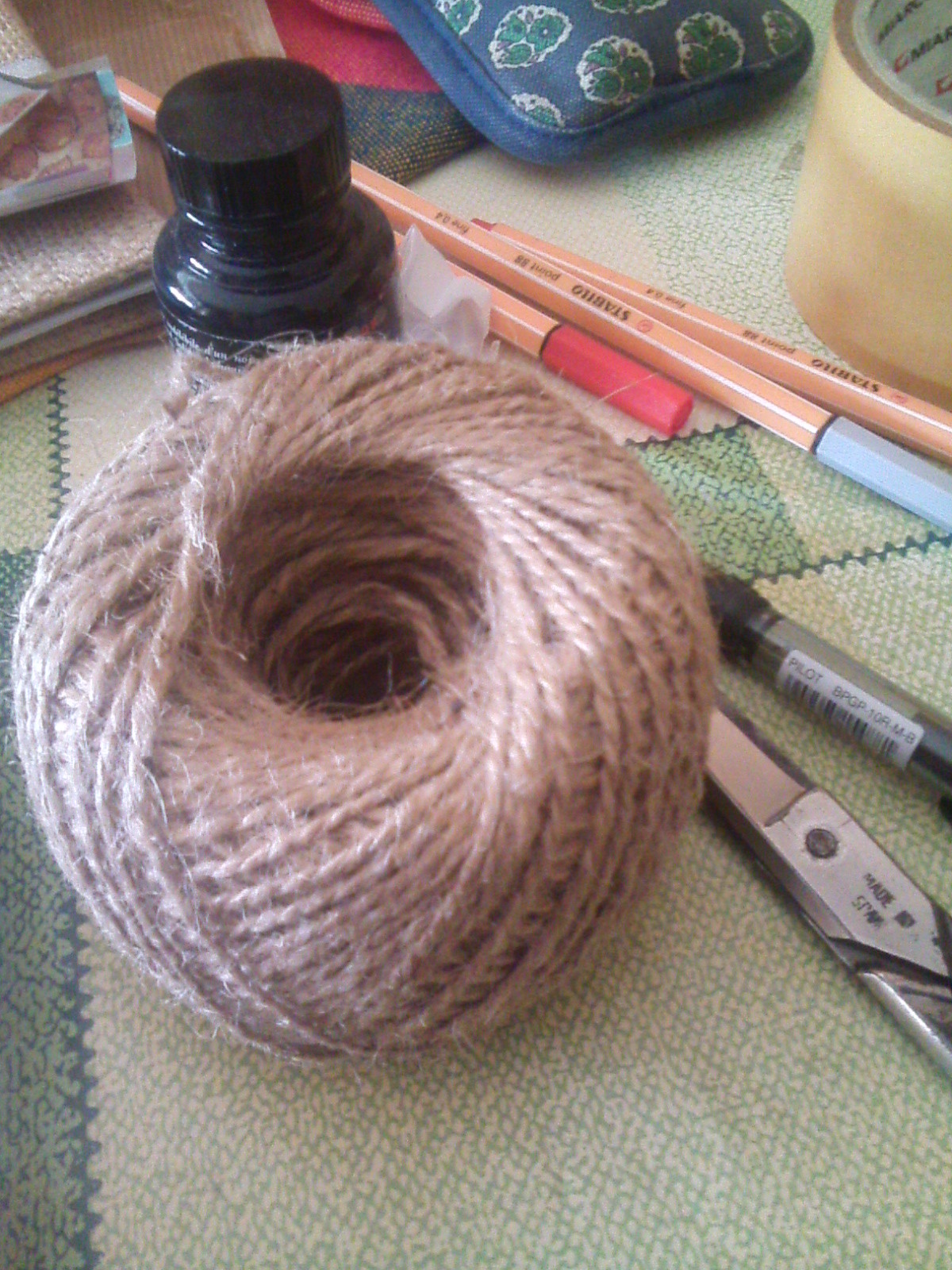
And here are some example, this has coffee with aloe vera which is very ex-foliating. I love the smell of coffee!

These others, that I made with a silicone mould, which are very good for comfortably removing the soap from the mould, are the green ones in the photos. You can see the coffee and aloe vera; turmeric and aloe vera...
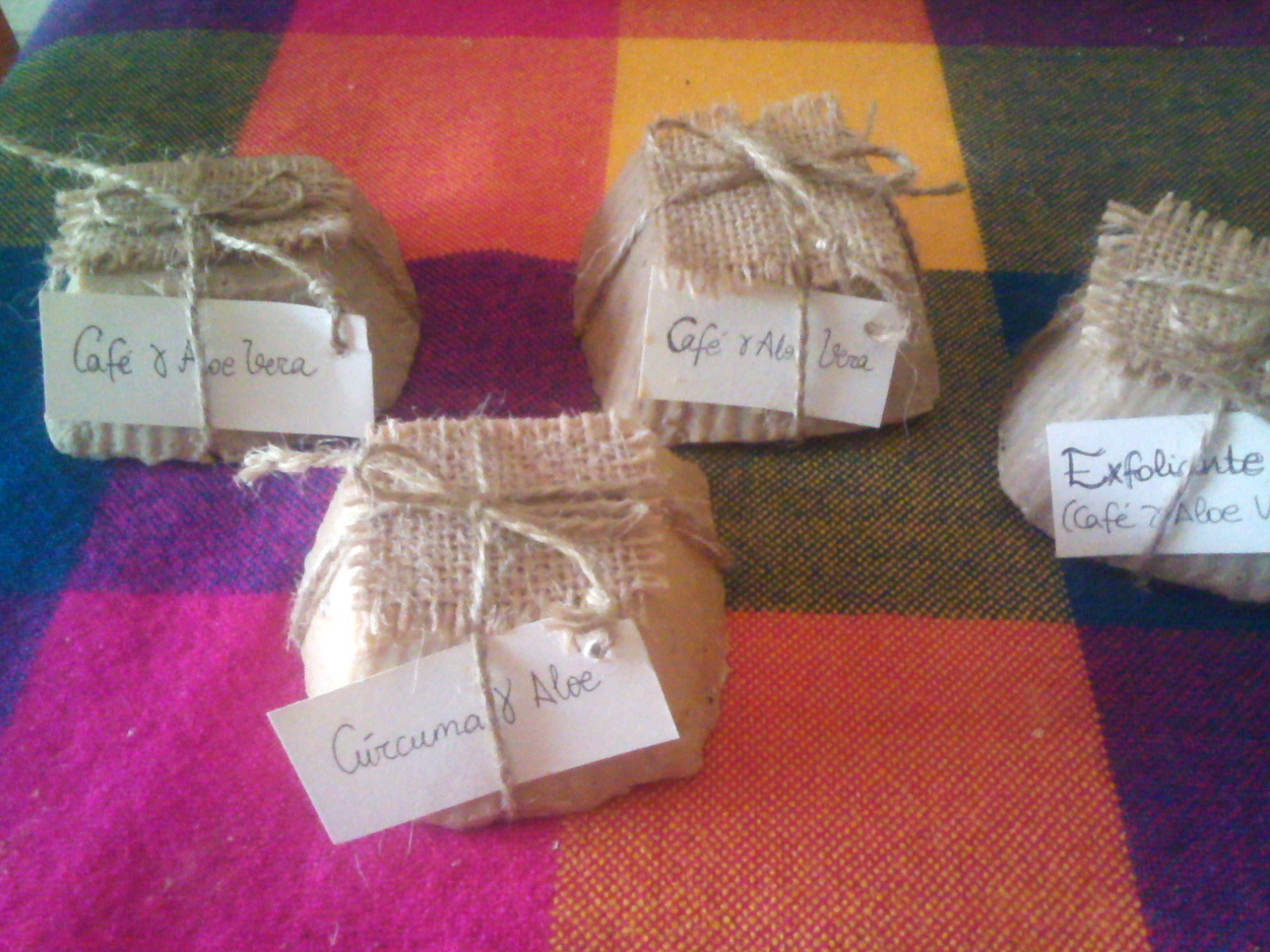
And now finally to wrap things up in the following way:
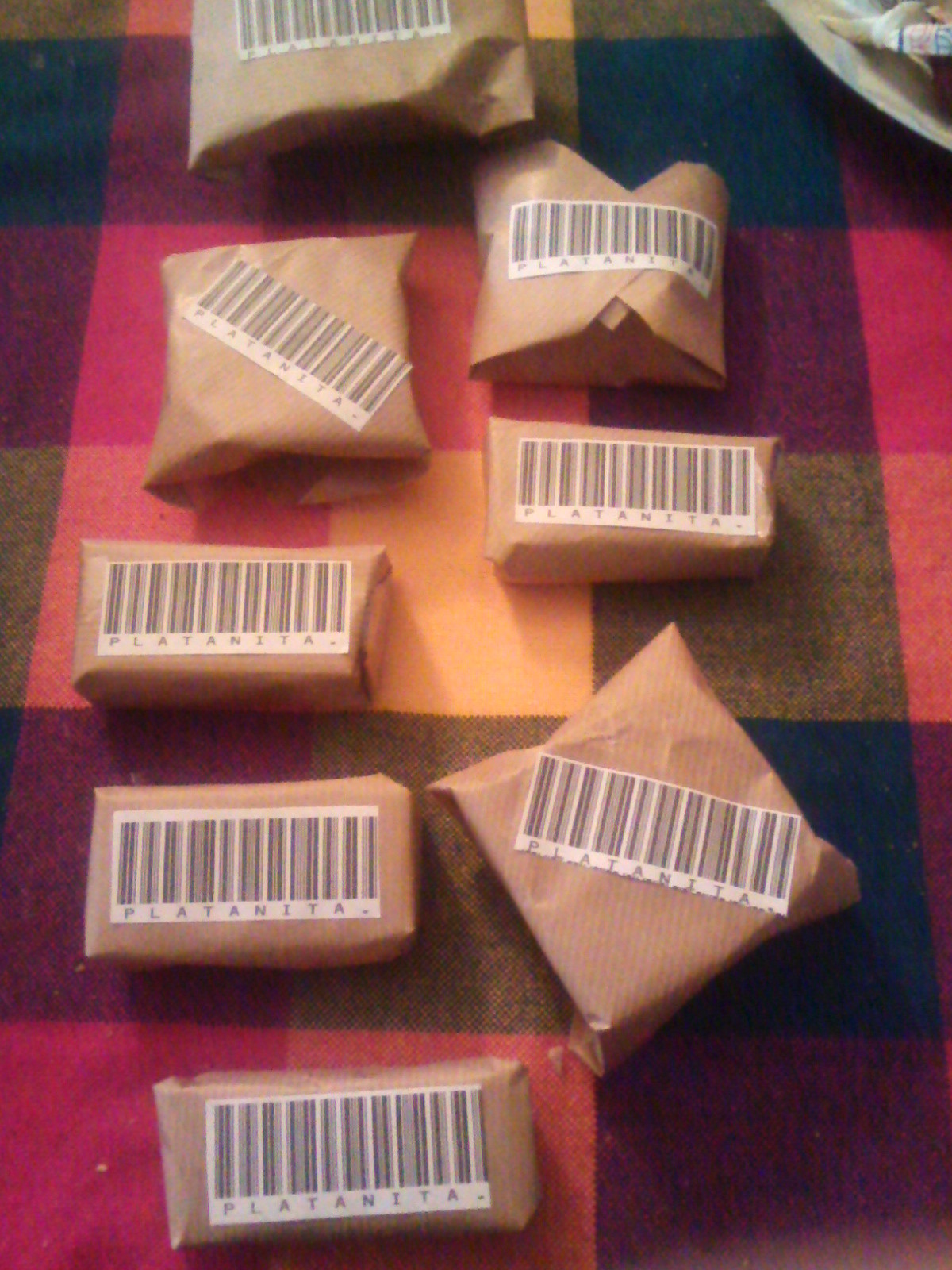
Well, well, of those that made it to the post, I can say that one week has passed, I have removed the moulds and they are looking very good! But let's see what comes out, REMEMBER we have to wait 24h before removing the moulds and then wait 1 month for it to cure and so that the soda disappears! We will have to change their face (flip there over) every 2 or 3 days, so that they can breath and allow the curing process to be the same on both sides.
Enjoy this very pretty process, I hope that you share your creations!
Be creative and enjoy making soap! Best wishes to alll! :)
Photo gallery
Content available in other languages
Want to have your own Erasmus blog?
If you are experiencing living abroad, you're an avid traveller or want to promote the city where you live... create your own blog and share your adventures!
I want to create my Erasmus blog! →


























Comments (0 comments)